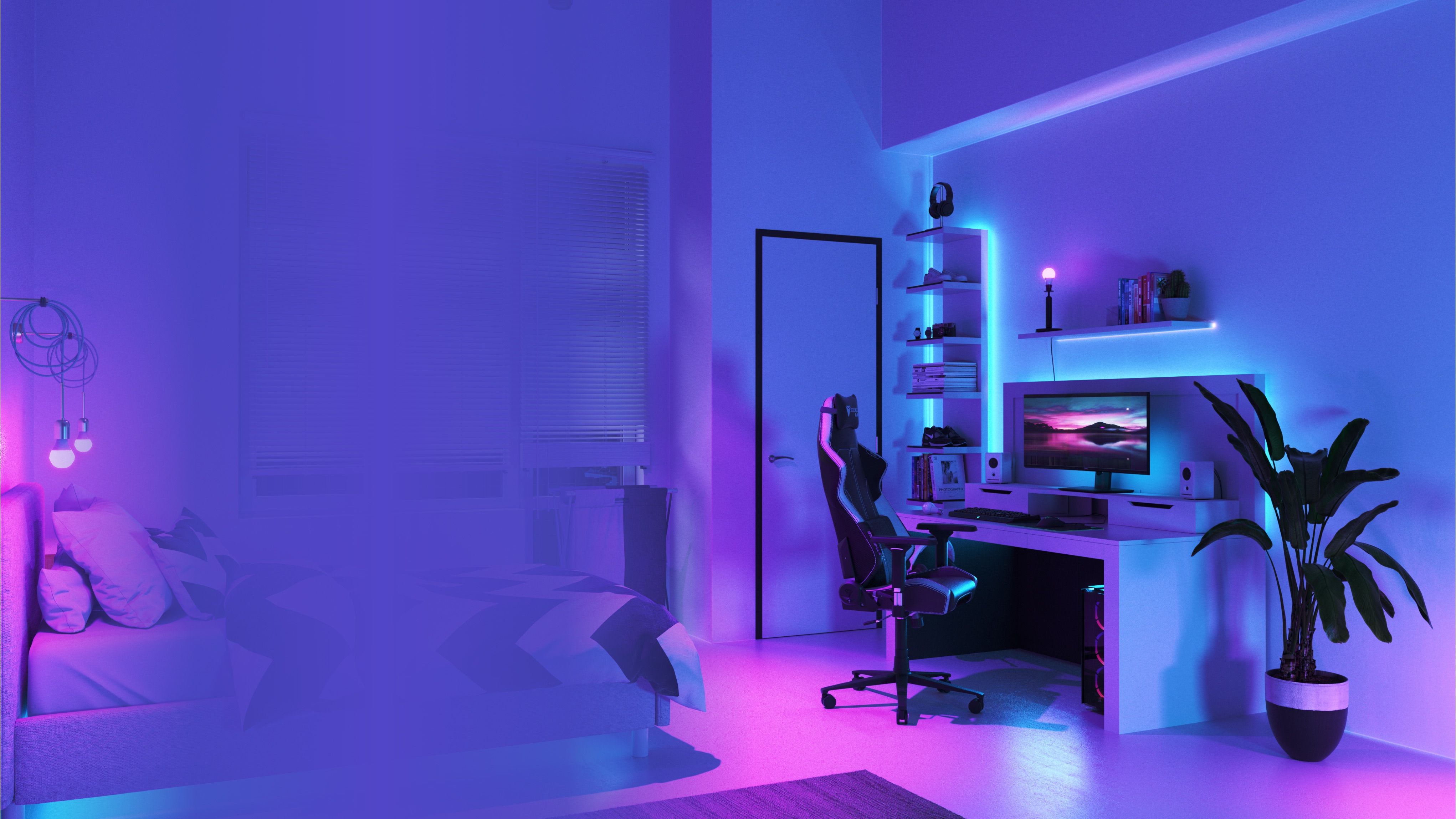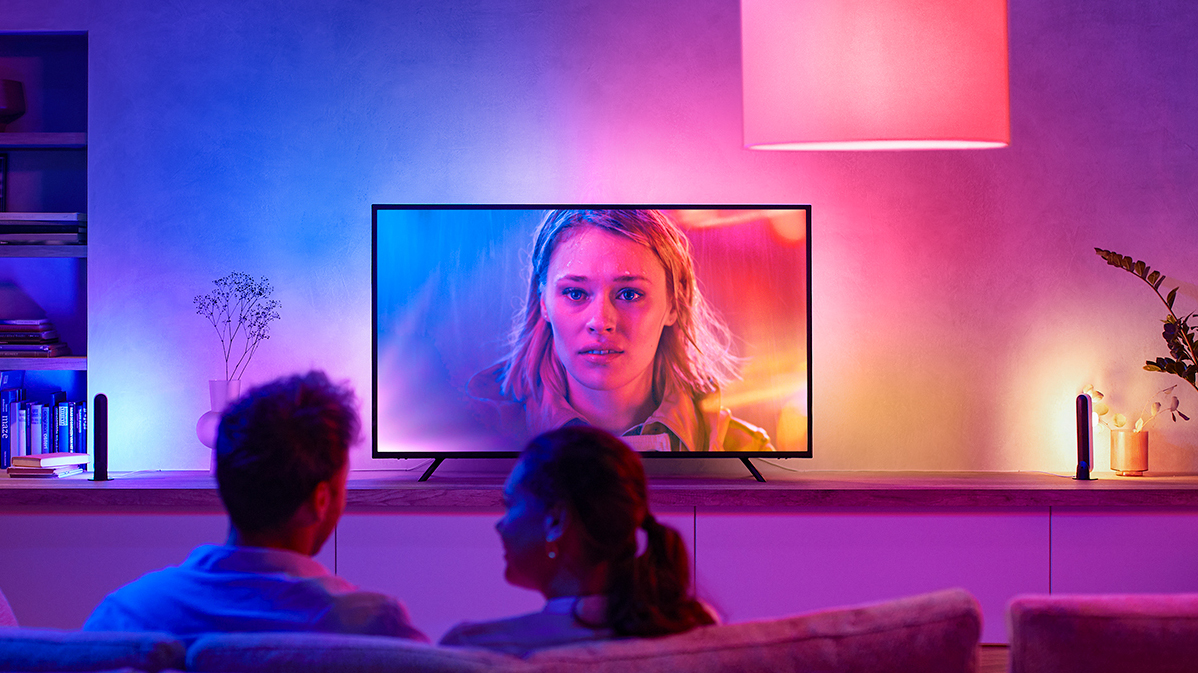Philips Hue Dimmer vs Nanoleaf Remote: which is the best wireless smart light switch?
One’s old-school and the other’s odd. Which remote is the perfect partner for your smart bulbs?


Lots of people have invested time and cash to get the best smart lighting. We use our smart bulbs to illuminate everything – and you can pair yours with some of the best smart light switches to make them even more convenient. Apps are great, but you can’t beat a good old-fashioned button when you want to let house guests have control over their own lights, or when Alexa seems determined to ignore you.
Of all the top smart light switches, we like the Nanoleaf Remote and the Philips Hue Wireless Dimmer V2 the best. They’re very different designs but they have a lot in common. So which one should you add to your own smart light setup? Let’s find out.

You can also use your Hue switch to control outdoor lighting.
Philips Hue Dimmer vs Nanoleaf Remote: compatibility
Both of these remotes are intended mainly for their own smart lighting platform: Philips’ Hue smart bulbs and Nanoleaf smart lights respectively. The Nanoleaf Remote connects to your existing setup via Bluetooth, and the Philips using Zigbee Light Link.
The Philips dimmer is designed to connect to a Hue Bridge, which unlocks all its features, but you can also use it without a Bridge. However, if you do, you’re limited to 10 bulbs and four preset light recipes. You can use your remote to control non-Hue bulbs that support Zigbee Light Link, such as as IKEA TRADFRI bulbs, provided they are dimmable.
The Nanoleaf Remote is mainly for Nanoleaf lights, but it also enables you to set panels to control Apple HomeKit scenes, so that could trigger other HomeKit smart lights, and also control devices such as smart thermostats, smart plugs and even smart water controllers. But that means it's most useful for Apple users, if you want to do more than control just Nanoleaf lights.
Both devices have apps for iOS and Android, and Nanoleaf also has dedicated desktop apps for Windows and Mac.

Philips Hue Dimmer vs Nanoleaf Remote: design
The second-generation Philips Hue Dimmer is a more refined and better looking version of the original, with the same clever design that enables you to wall mount it (with adhesive tape if you wish, which is handy if you rent) or unclip it from the mount and use it like an ordinary remote control. The top button turns the lights on and off, the middle section brightens or dims the lights and the bottom section switches between light recipes. These are preset if you don’t use a Hue Bridge and customisable if you do.
Get all the latest news, reviews, deals and buying guides on gorgeous tech, home and active products from the T3 experts
The Nanoleaf Remote looks like a giant Dungeons & Dragons dice, and at nearly 10cm wide and over seven centimetres tall you’re not going to lose it down the back of the sofa. It has twelve programmable panels, and you simply turn the appropriate panel face up to activate it. You can then make the lights brighter by spinning the Remote clockwise and go the other way to make them dimmer. The Remote glows briefly when it’s in use to provide visual feedback and to impress your guests.
Philips Hue Dimmer vs Nanoleaf Remote: features
The Philips Hue Dimmer is nice and straightforward: simply connect to the Bridge (if you have one) and program the Hue button to switch between the scenes you prefer. Philips has chosen to keep this switch simple, to control one kind of smart home technology and to do it well. The phone app has recently been revamped to make it feel more modern and intuitive, and it’s easy to change the defaults for your dimmer.
The Nanoleaf Remote is more ambitious, and its HomeKit compatibility means you can easily program it to control HomeKit scenes involving multiple devices, so for example you might have a scene that sets the lights and the thermostat together. The app also has a useful Find My Remote feature, although given the size of the Remote we can’t imagine you’ll need it very often.

Philips Hue Dimmer vs Nanoleaf Remote: verdict
If you only have Hue lights then the Hue Dimmer is the best remote for you; if you only have Nanoleaf lights, then the Nanoleaf Remote is a lot of fun. Neither is perfect – it’s easy to lose the Philips if you use it as a remote control rather than a wall switch, and with twelve panels to program you’re going to forget which Nanoleaf Remote panel does what – but they work very well with their respective platforms.
Writer, musician and broadcaster Carrie Marshall has been covering technology since 1998 and is particularly interested in how tech can help us live our best lives. Her CV is a who’s who of magazines, newspapers, websites and radio programmes ranging from T3, Techradar and MacFormat to the BBC, Sunday Post and People’s Friend. Carrie has written more than a dozen books, ghost-wrote two more and co-wrote seven more books and a Radio 2 documentary series; her memoir, Carrie Kills A Man, was shortlisted for the British Book Awards. When she’s not scribbling, Carrie is the singer in Glaswegian rock band Unquiet Mind (unquietmindmusic).
